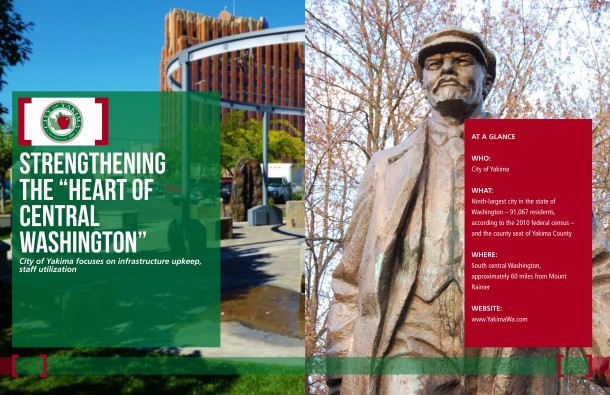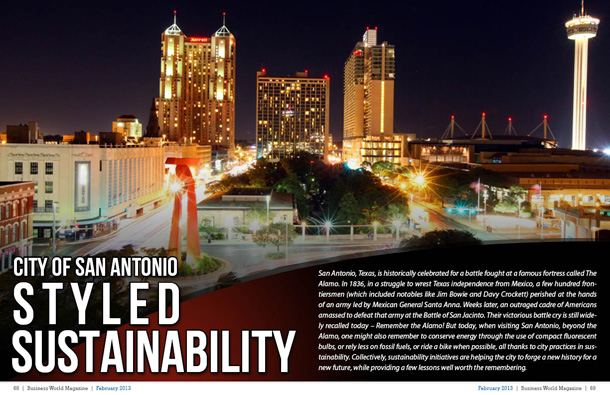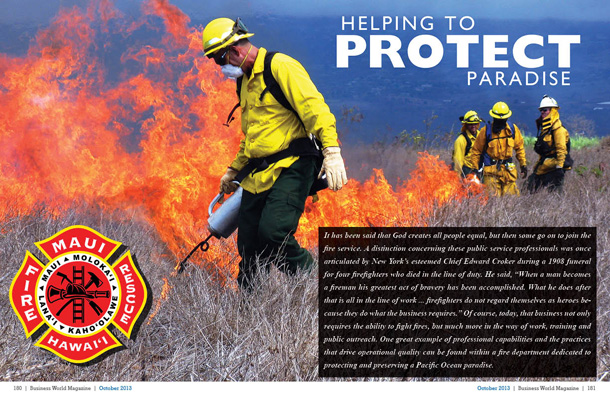
Strengthening the “Heart of Central Washingtonâ€
City of Yakima focuses on infrastructure upkeep, staff utilization

It’s a time of transition in Yakima, Wash., and few people are more in on it than Debbie Cook.
She’s been the city’s director of utilities and engineering since arriving from New Mexico in January 2013, and since taking over the position she’s had a front-row seat to the sorts of changes that tangible boosts in both population and tourism can necessitate for all aspects of infrastructure.
Agriculture and its related processing operations have been the significant economic drivers for many years in Yakima and the surrounding region, though a burgeoning wine industry and the arrival of some micro-brewed beer operations have contributed to an uptick in visitors from outside the area.
Vineyards based in and around Yakima had long been important suppliers to wineries operating closer to Walla Walla along the state’s southeastern border with Oregon, but those wineries have been inching closer and closer to Yakima in recent years as the industry has gathered momentum.
More than 50 wineries in the Yakima Valley now cover more than 11,000 acres of land.
“Over the past 10 years or so, there’s been a really strong push from the Yakima Valley’s wine interests – a loosely organized group of vineyards and wineries – to promote Yakima, Yakima Valley wines and to bring the tourism in,†Cook said. “That’s starting to really pay off.â€
The renewed emphasis on tourism has coincided with a steady growth in the number of people who call Yakima a full-time home. The city’s population was just short of 55,000 as of the federal census in 1990, before 31 percent jump to 71,845 just 10 years later.
Another 26.8 percent rise came over the subsequent decade in time for the official count in 2010, and an updated estimate placed the total at 93,257 – a moderate increase of 2.4 percent – in 2013.
Seven area employers boasted four-digit workforces, according to the Greater Yakima Chamber of Commerce, led by Yakima Valley Memorial Hospital at 2,200 and including the Yakima School District (1,736), Walmart (1,587), the state’s Department of Social and Health Services (1,400), the county itself (1,213), Del Monte Foods (1,200) and the Yakima Valley Farm Workers Clinic (1,181).
Cook’s Utilities and Engineering Department fluctuates in the neighborhood of 120 employees and has an operating budget of $62 million, including capital projects. The department is comprised of divisions specifically dedicated to wastewater/sewer, water and irrigation and engineering functions, and she said an imminent focus will be to re-staff the engineering arm to match past headcounts.
“We’ve had some attrition through retirement and there’s been some streamlining going on,†she said. “We’re starting to look at a rebuilding phase. We’re specifically looking at starting to rebuild the engineering group, which is now a very, very small group.â€
Aging is a concern, though not a grave one, when it comes to the city’s water-centric infrastructure, according to Water/Irrigation Division Manager Dave Brown. He said some cast-iron mains need to be replaced more for water quality issues than imminent failures, and cited both a rebuilt irrigation system that’s “in pretty good shape†and a rebuilt treatment plant that’s “almost new.â€
The city’s growth in both population and footprint has meant new strain on wastewater capabilities, prompting the replacement of original clay pipes in some areas that dated back to the 1930’s, said Shelley Wilson, Yakima’s wastewater manager. But the wastewater treatment facility is functioning well, she said, and quite a bit of building on the site has led to improved and reconfigured processes.
Where the blend of age and capacity is most being felt, it seems, is on Yakima’s roads.
“We have a lot of roads that are old and in not super great shape,†Chief Engineer Brett Sheffield said. “In the last couple years we have done two relatively large grind and overlay projects which have covered about 120 lane miles. We’ve gone and repaired the roads that are in the worst shape, mainly focusing on arterials and collectors.
“We still do have a lot of local access roads that aren’t in very good shape. But our new city manager has some good ideas and is really trying to improve the serviceability of our roads.â€
Cook said City Manager Tony O’Rourke indeed arrived just more than two years ago and soon after put together a survey for residents, which ultimately yielded a response that gave alarmingly low marks to road quality. As a result, the city embarked upon a program that paved between 25 and 30 lane miles last year and set an ambitious goal of 92 miles to be worked on this summer.
The paving season in Yakima runs from April to November, so the sheer volume of work in such a narrow timeframe will lead to headaches, but, Cook said, “It’s going to be really nice when it’s done.â€
And what’s even nicer, she said, is that the city has found creative ways to pay for it all.
“This organization has been incredibly fortunate in the fact that there’s been some really good grant and loan opportunities that have been snared by the staff,†she said, citing a series of underpass and grade-separation work that was ticketed at $43 million, but only cost the city $200,000 thanks to state and federal grant money. “We’re looking more and more at leveraging money.
“We had a pretty low debt ratio for a while, so now we’re looking a little more at pushing that debt ratio and leveraging our money through bonds and loans as opposed to wholly paying for every project right off the bat and having enough money in the bank first. We’re actually being a little more brave about leveraging what we have, and it’s making a big difference.
“We’re putting up some big projects really fast.â€
Among those projects have been a completed recycle lagoon at the water treatment plant, a completed high-rate anaerobic system to treat high-strength fruit waste, the aforementioned 92 miles of road reconstruction, a BNSF Railway grade separation and a wastewater outfall relocation that will enable improvements in water quality, aquifer regeneration and salmon habitat.
Going forward, Cook anticipates “lots of flat and black infrastructure†projects that begin with a revitalization to the city’s northern gateway on North First Street, whose existing condition she labeled as “a little Third Worldish.†Other work could include a downtown plaza, a series of bicycle/pedestrian connectivity initiatives and rehabilitation for appropriate wastewater collection lines.
Just as important as the work, though, will be the proper departmental approach going forward as she seeks to eliminate silos and treat the operation with a more holistic approach.
“In five years, I’m hoping that my engineering group and the associated engineers that are matrixed out to water and wastewater will be a very high-performing project management group,†she said.
“We really don’t go into vertical construction at all, and there’s no reason why we shouldn’t. We certainly have the talent and we just need to reorganize or to somehow evolve to a project management focus as opposed to an engineering focus, which they have been in the past.â€
 AT A GLANCE
WHO: City of Yakima
WHAT: Ninth-largest city in the state of Washington – 91,067 residents, according to the 2010 federal census – and the county seat of Yakima County
WHERE: South central Washington, approximately 60 miles from Mount Rainier
WEBSITE: www.YakimaWa.com








